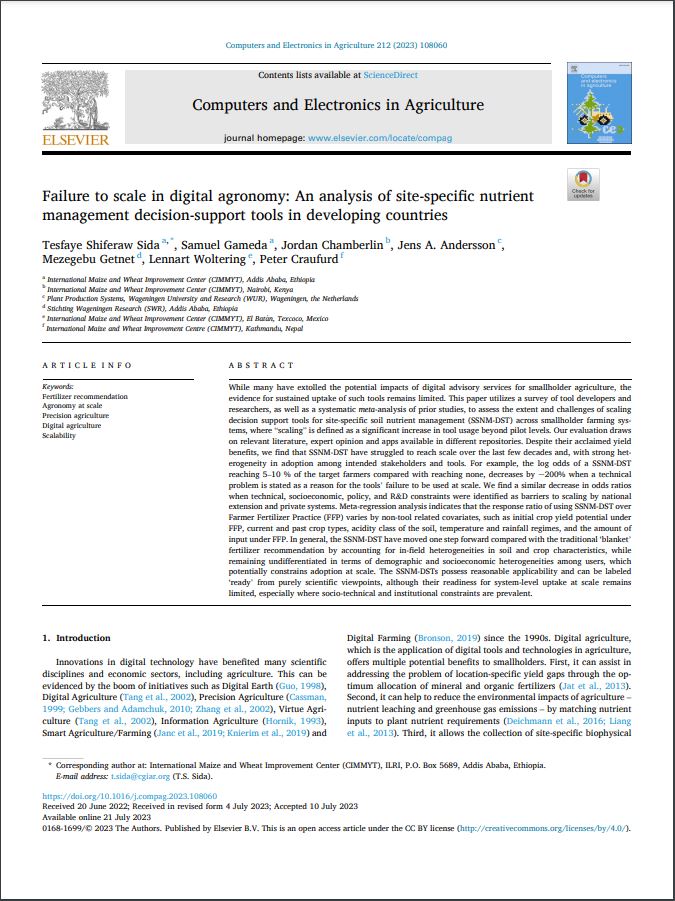While many have extolled the potential impacts of digital advisory services for smallholder agriculture, the evidence for sustained uptake of such tools remains limited. This paper utilizes a survey of tool developers and researchers, as well as a systematic meta-analysis of prior studies, to assess the extent and challenges of scaling decision support tools for site-specific soil nutrient management (SSNM-DST) across smallholder farming systems, where “scaling” is defined as a significant increase in tool usage beyond pilot levels. Our evaluation draws on relevant literature, expert opinion and apps available in different repositories. Despite their acclaimed yield benefits, we find that SSNM-DST have struggled to reach scale over the last few decades and, with strong heterogeneity in adoption among intended stakeholders and tools. For example, the log odds of a SSNM-DST reaching 5–10 % of the target farmers compared with reaching none, decreases by ∼200% when a technical problem is stated as a reason for the tools’ failure to be used at scale. We find a similar decrease in odds ratios when technical, socioeconomic, policy, and R&D constraints were identified as barriers to scaling by national extension and private systems. Meta-regression analysis indicates that the response ratio of using SSNM-DST over Farmer Fertilizer Practice (FFP) varies by non-tool related covariates, such as initial crop yield potential under FFP, current and past crop types, acidity class of the soil, temperature and rainfall regimes, and the amount of input under FFP. In general, the SSNM-DST have moved one step forward compared with the traditional ‘blanket’ fertilizer recommendation by accounting for in-field heterogeneities in soil and crop characteristics, while remaining undifferentiated in terms of demographic and socioeconomic heterogeneities among users, which potentially constrains adoption at scale. The SSNM-DSTs possess reasonable applicability and can be labeled ‘ready’ from purely scientific viewpoints, although their readiness for system-level uptake at scale remains limited, especially where socio-technical and institutional constraints are prevalent.

